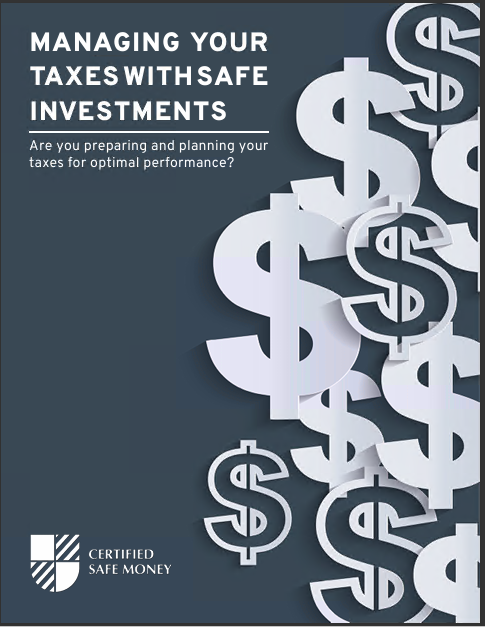Key Takeaways
-
A fixed index annuity offers the potential for market-linked growth while ensuring your principal remains protected, making it appealing for conservative investors seeking both growth and safety.
-
The trade-offs include surrender charges, limited liquidity, and caps on returns, which can significantly impact your long-term financial strategy if not carefully considered.
Understanding the Basics of a Fixed Index Annuity
A fixed index annuity (FIA) is a long-term insurance contract that allows you to earn interest linked to the performance of a market index, such as the S&P 500. Unlike directly investing in the stock market, your principal is protected from market downturns. Instead of losing money when markets decline, you simply earn no interest during those periods.
You receive returns through index-linked crediting methods. These methods determine how much of the index growth is credited to your account. While this gives you an opportunity for higher returns compared to a fixed annuity, the returns are often capped to limit the insurance company’s exposure.
Why People Consider Fixed Index Annuities
You may be drawn to an FIA for several reasons:
-
Principal protection: Your initial investment is shielded from market losses.
-
Potential for growth: Returns are tied to the performance of a stock market index.
-
Tax deferral: Earnings grow tax-deferred until withdrawal, which can help compound growth.
-
Retirement income: Many contracts offer optional riders that provide guaranteed lifetime income.
How Interest Is Credited
Interest is credited based on the performance of the chosen index over a specific period. For example, if the index rises 8 percent in a year, you may only receive a portion of that return depending on the participation rate and caps. Key terms include:
-
Participation rate: The percentage of index growth you are credited with (e.g., 50 percent).
-
Cap rate: The maximum interest rate credited in a period (e.g., 6 percent).
-
Spread or margin: A set percentage deducted from the index growth before interest is credited.
Understanding these features is crucial before you commit because they directly impact how much you earn.
The Upside of Choosing a Fixed Index Annuity
-
Protection Against Losses
Since your principal is guaranteed, you avoid the risk of losing money during market downturns. This makes FIAs a safer choice compared to direct equity investments. -
Growth Potential
By linking interest to a market index, you can potentially achieve higher returns than a traditional fixed annuity. -
Tax-Deferred Growth
Unlike taxable accounts, your earnings accumulate without immediate taxation, giving you the benefit of compounding over time. -
Flexible Payout Options
FIAs often provide a range of withdrawal and annuitization options, allowing you to structure income to suit retirement needs.
The Downsides That Deserve Attention
-
Limited Liquidity
Most FIAs come with surrender periods that can last 7 to 10 years. During this time, withdrawing more than the allowed percentage can result in significant penalties. -
Caps on Earnings
While your money is safe from losses, your gains are limited. Caps and participation rates can reduce the overall growth potential compared to direct market investing. -
Complexity of Terms
FIAs come with many moving parts such as spreads, crediting methods, and riders. This complexity makes it harder for you to understand the full implications of your contract. -
Fees for Riders
Optional income or death benefit riders come with fees that reduce your overall returns.
Surrender Charges and Time Commitments
A fixed index annuity requires a serious long-term commitment. Most contracts include surrender charge schedules lasting from 7 to 10 years, with some extending up to 12 years. If you need access to your funds before the surrender period ends, you may face charges starting at 7 to 10 percent of the withdrawal and gradually declining each year.
This makes FIAs unsuitable if you anticipate needing significant liquidity in the near term. Instead, they are best suited for long-term retirement planning where you can leave the money invested for years.
Tax Implications
Earnings within an FIA grow tax-deferred, meaning you only pay taxes when you withdraw funds. However, withdrawals before age 59½ are typically subject to a 10 percent IRS penalty in addition to ordinary income taxes. When planning, it is essential to align withdrawals with your broader retirement strategy to avoid unnecessary tax consequences.
Income Riders and Retirement Planning
Many FIAs allow you to purchase income riders that guarantee a lifetime income stream. These can be attractive if you are concerned about outliving your retirement savings. Income riders usually come with annual fees ranging from 0.5 to 1.5 percent of the contract value. Over decades, these fees can reduce the growth of your annuity.
When evaluating whether to add a rider, you should weigh the guaranteed income security against the cost of diminished accumulation potential.
Comparing FIAs With Other Safe Money Options
When weighing FIAs, it helps to compare them with other safe money investments:
-
Fixed annuities: Offer guaranteed interest but without market-linked growth potential.
-
Certificates of deposit (CDs): Provide safety and predictable returns but lack tax deferral and growth potential.
-
Bonds: Offer steady income but come with market and interest rate risk.
FIAs balance risk and reward by protecting principal while offering higher growth potential than fixed accounts, though with limited upside compared to riskier assets.
Evaluating Suitability for Your Goals
A fixed index annuity can fit into your retirement plan if:
-
You want growth potential with protection from losses.
-
You do not need immediate access to the funds.
-
You prefer tax-deferred accumulation.
-
You are comfortable with the limitations on upside returns.
However, if you anticipate needing high liquidity or are looking for maximum growth potential, other investments may be better suited.
Key Considerations Before Signing a Contract
Before committing, ask yourself:
-
How long is the surrender charge period?
-
What are the participation rates, caps, and spreads?
-
What optional riders are available, and what do they cost?
-
How does the FIA compare with other safe money options for your specific goals?
Taking the time to review these questions can help you avoid surprises later.
Weighing Your Decision Carefully
Choosing a fixed index annuity is not something you should rush. It is a commitment that could last a decade or longer. While FIAs provide a blend of safety and growth, the limitations on returns, liquidity restrictions, and potential fees mean you need to evaluate them carefully in the context of your entire retirement plan.
If you are considering this path, take the next step by getting in touch with a licensed professional listed on this website. A professional can help assess whether an FIA aligns with your financial goals and retirement timeline.












